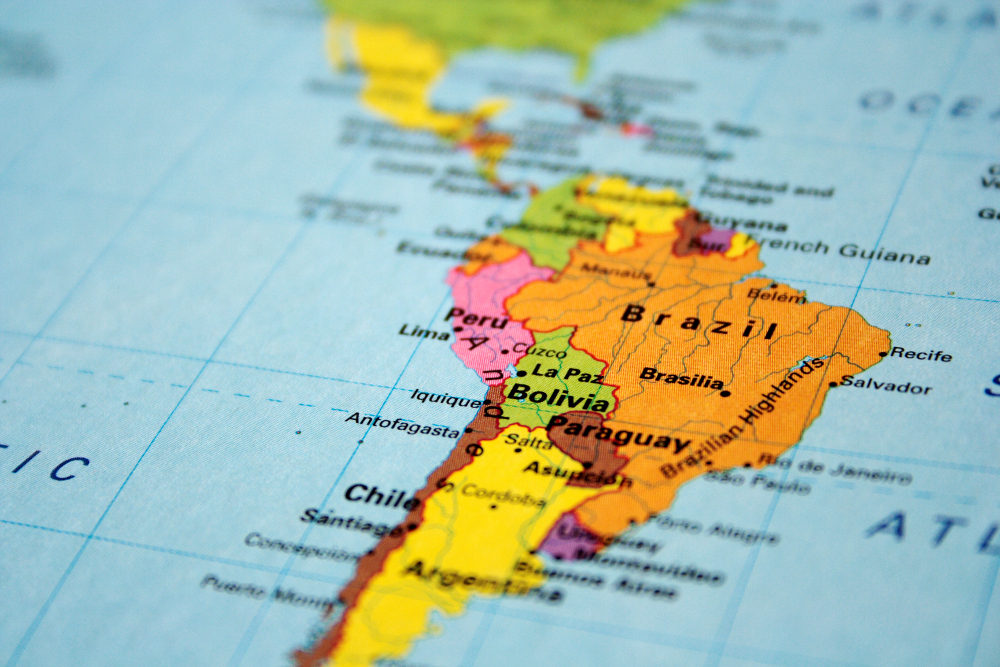Geopolitical realities of the Cold War played a large role in ensuring that no meaningful processes would come to fruition. Economic cooperation and regional initiatives in Latin America have come a long way in the last century or so.
At present, in the early years of the 21st century, there was a renewed and growing trend toward regionalism, notwithstanding some severe economic setbacks that several countries have faced, starting with the Mexican debt crisis in 1982.
The influence of the United States, in many ways, precluded such initiatives. But by the 1980s, the global environment was on its way to significant and far-reaching changes, which allowed regional programmes to be brought back to the table.
ADVERTISEMENTS:
Central American Common Market (CACM) The Central American Common Market was established as a result of the Treaty of Managua in December 1960 by El Salvador, Guatemala, Honduras and Nicaragua. Costa Rica acceded to the Treaty in 1962.
This included commitments made by the multilateral treaty in 1958 as well as other bilateral agreements. All Central American states since independence had constituted a single political unit-the Federal Republic of Central America.
Since its disintegration there have been several attempts to link the five states as they are similar and form a compact geographical unit.
ADVERTISEMENTS:
The treaty committed the states to eliminate tariffs on intraregional trade on all but a limited number of goods and establish a common external tariff (CET). But there were problems with the CACM. The ISI failed because countries did not have the resources to sustain inward looking policies.
Even the annual tariff reductions were a problem. Some attributed the balance of payments difficulties to the progress in trade liberalisation. There were other tensions unrelated to CACM and resulted in violence between El Salvador and Honduras. Caribbean Community (CARICOM)
CARICOM came into being by the Treaty of Chaguaramas in 1973. CARICOM is an extension of CARIFTA, the Caribbean Free Trade Association created by an agreement signed in 1965 between Antigua, Barbados, Belize, Dominican Republic, Grenada, Guyana, Jamaica, Montserrat, St. Kitts-Nevis, Anguilla, St. Lucia, St. Vincent and Trinidad and Tobago.
Common market meant liberalisation of trade and imposition of CET. The smaller members were given a longer period of time to eliminate tariffs.
ADVERTISEMENTS:
Latin American Free Trade Association (LAFTA) In the post Second World War period, a series of regional associations were organised in Europe to lay the foundations of peace, especially between France and Germany. The economic basis for these associations -the European Coal and Steel Community (1951) and the European Economic Community (1951) was the free trade model.
Similarly, the first step towards regional cooperation in Latin America also adopted this liberal economic free trade framework. This was the
Latin American Free Trade Association (LAFTA), created by the Treaty of Montevideo in 1960. It involved Argentina, Brazil, Mexico, Peru, Paraguay, Chile, Uruguay, and eventually, Venezuela, Colombia, Bolivia and Ecuador. LAFTA, following this logic, was supposed to help nations benefit from a larger market through regional integration by taking advantage of the economies of scale in producing for this larger market.
LAFTA failed to take concrete shape due to a number of reasons, the most important being the size of the grouping.
In the 1960s, the strategy of import substitution industrialisation (ISI) took root in Latin America. This focused on strengthening all the levels of domestic industry with the help of government aid.
Countries in other regions, such as South Korea, Taiwan and Japan in East Asia, were already following variants of this approach, albeit with the concurrence of the United States. In Latin America, ISI came about with left leaning ideologies, most notably the dependency movement.
The ISI led to increased protectionist measures. But the individual economies in the region were not large enough and neither did they have adequate resources to sustain such inward looking policies. The failure of the ISI also led to changes in the way regional cooperation was seen.
The goal of industrialisation remained, but the realisation dawned that this could not come about till the countries did not integrate their markets. From just free trade agreements, the objective became development and regionalism through state support. The United Nations Economic Commission for Latin America and its director Raul Prebisch were instrumental in this regard.

